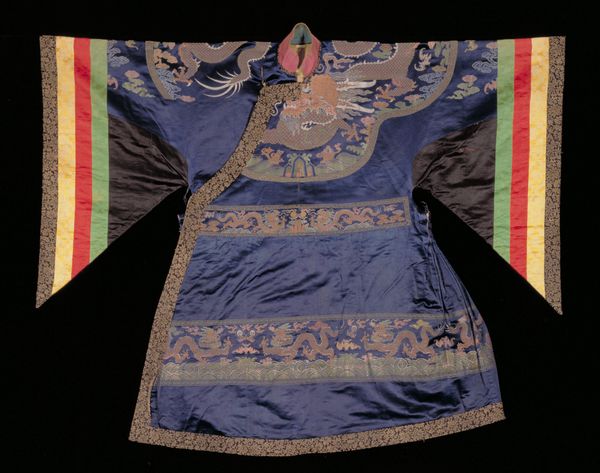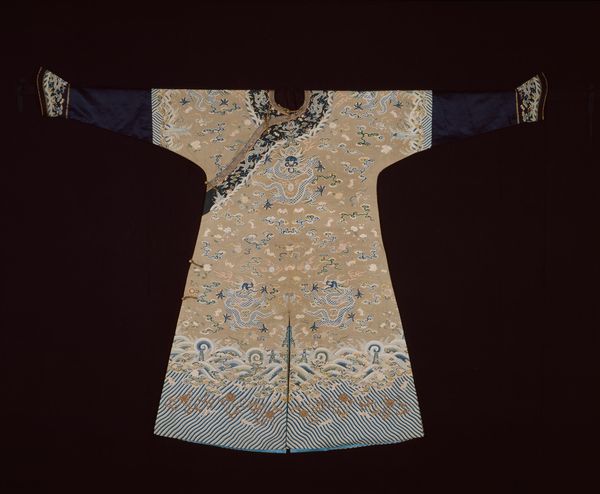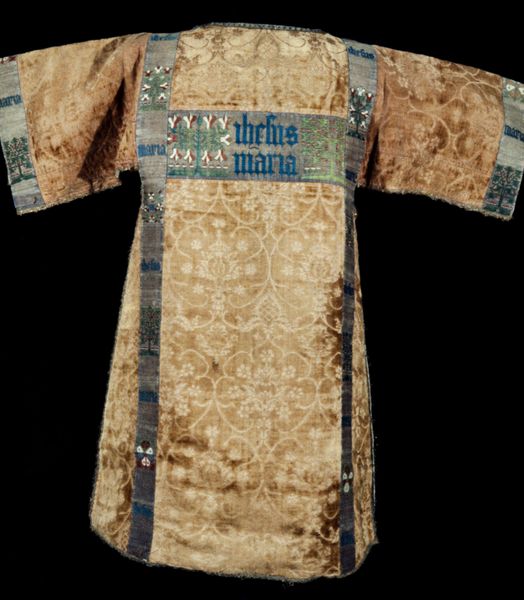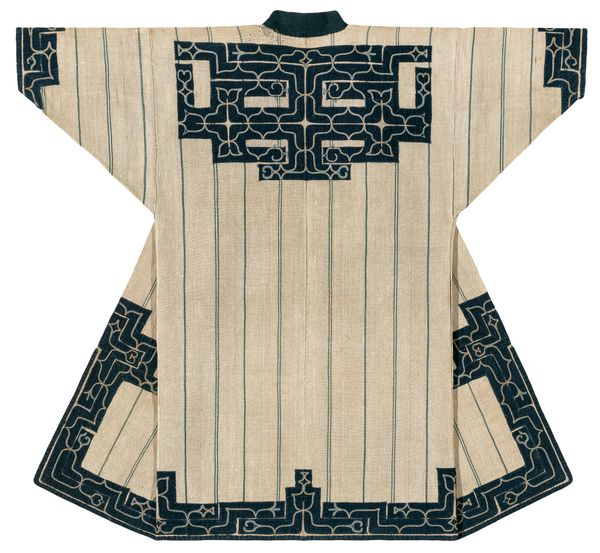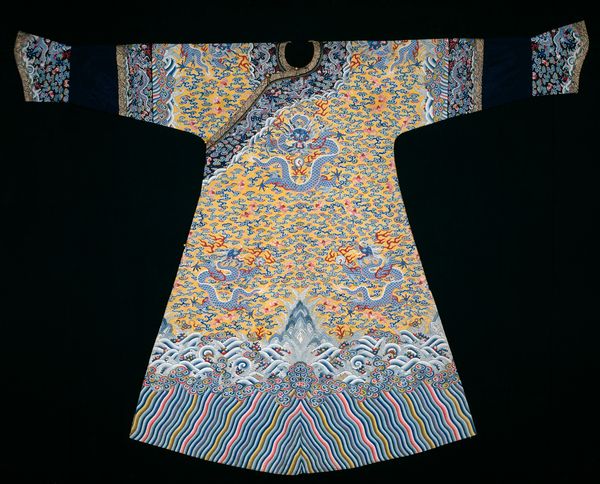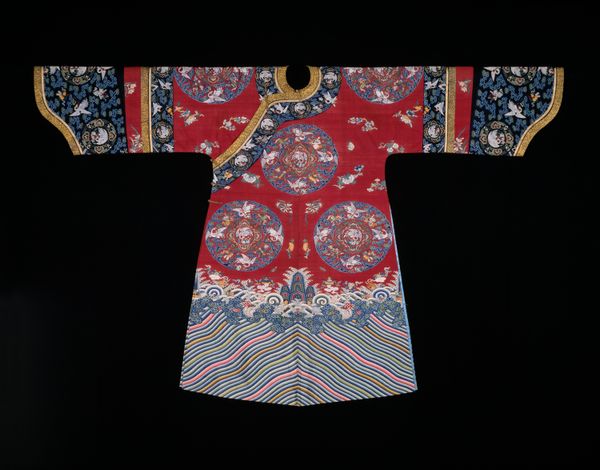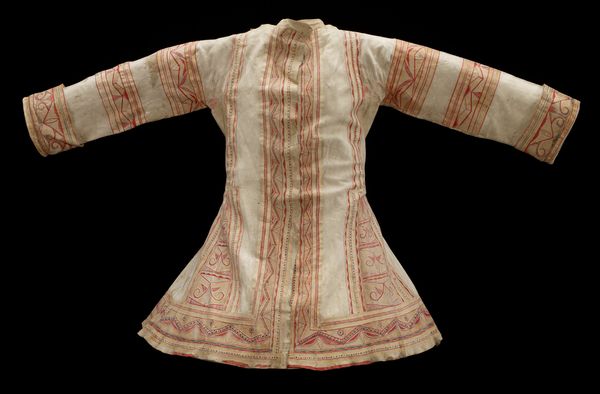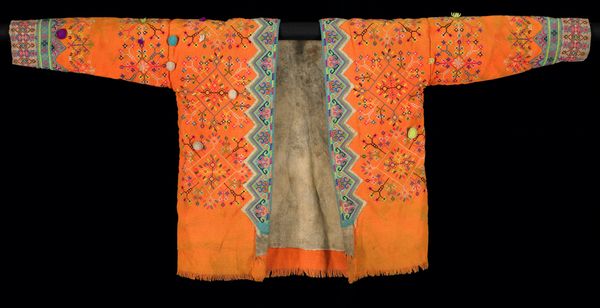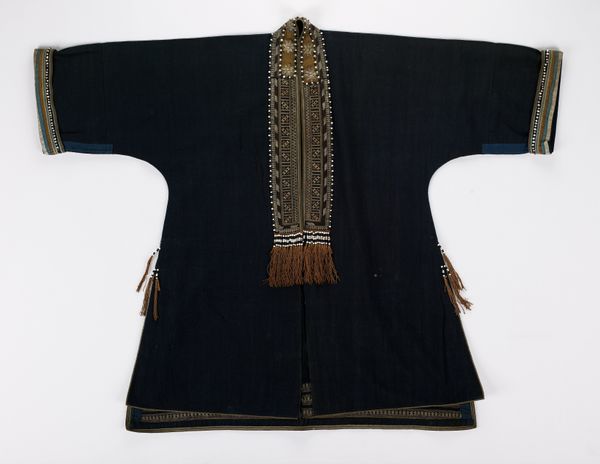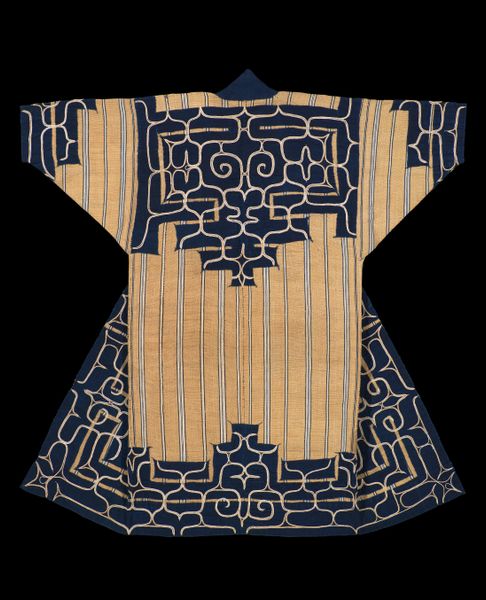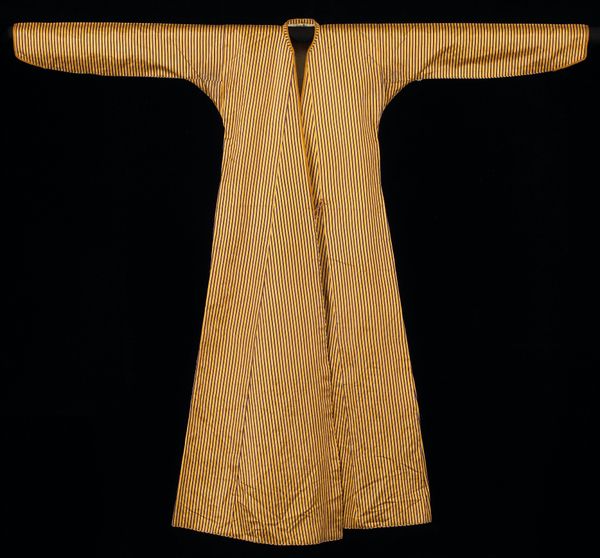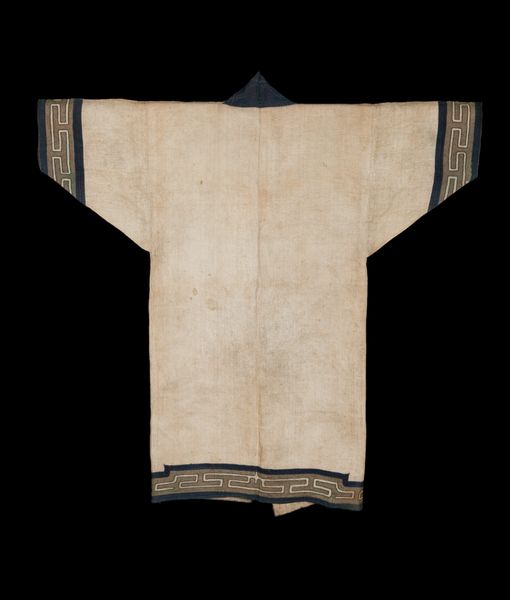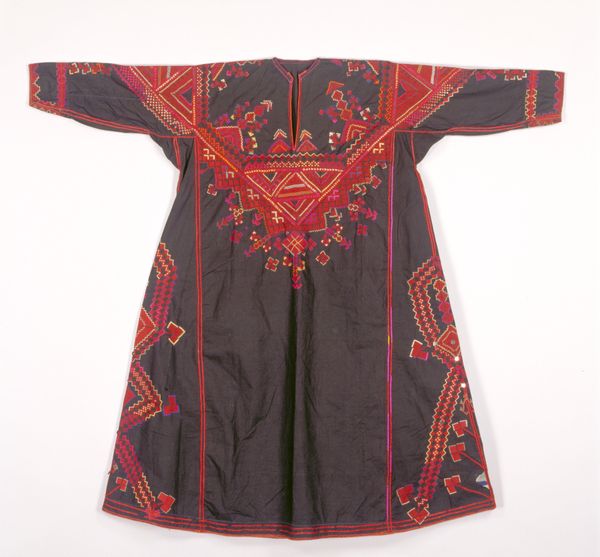
fibre-art, textile
#
fibre-art
#
asian-art
#
textile
#
decorative-art
Dimensions: 54 3/4 × 42 1/2 in. (139.07 × 107.95 cm)
Copyright: Public Domain
Curator: Here we have a remarkable example of indigenous craftsmanship: a woman’s fish-skin festival coat, or hukht, dating back to the 19th century. Editor: My immediate impression is that despite its age, the patterns and decorative elements still speak to a sense of ceremonial power. It has an intriguing, almost ethereal quality. Curator: Absolutely. These garments were not merely decorative; they played a vital role in ritual and social life. Considering the communities along the Amur River, where such coats originated, fish were integral to their sustenance and spirituality. The process of preparing and decorating the fish skin demanded skillful artistry on the part of women. Editor: The symbology seems elaborate. Could you elaborate on specific motifs and their potential significance? Curator: Of course. While specific interpretations can be elusive given the passage of time, it is reasonable to suppose the repeating patterns served as visual affirmations tied to natural abundance and spiritual harmony. We should remember, too, that adornment was, and remains, deeply entwined with asserting individual and communal identity. It reflects how a wearer seeks to communicate her role in society. Editor: It’s amazing to think that such intricate patterns and delicate details were achieved using fish skin. Knowing how natural resources affect creativity adds so much to my understanding and admiration of the garment. Does it symbolize power for women? Curator: The labor invested in the production process, which involves both women and nature, underscores female contributions in these communities, as women were those who sewed and decorated clothes and bags for all family members. Furthermore, festival clothing represented significant events in social and spiritual contexts, thereby providing an avenue for women's community engagement. Editor: It certainly provides us a window into the past—into the beliefs and artistry of the communities along the Amur River, giving symbolic expression and visibility to cultural continuity and memory. Thank you! Curator: It gives the community that created it a new life with its message that lasts centuries, right?
Comments
minneapolisinstituteofart almost 2 years ago
⋮
This woman’s festival coat is pieced together from fish skins. Its tapered sleeves and diagonal closure result from cultural exchanges with the Manchus and Mongols. The use of cotton thread and red- and blue-dyed areas likewise speaks to its maker’s access to trade networks that reached the area. Much of the surface, especially on the back, features curvilinear motifs that showcase the exacting skill and attention to symmetry of the woman, or women, who made it. Leather pieces line and are stitched to the surface. While highly stylized, many of the design motifs can nonetheless be identified: birds with outstretched wings, masks, and the sinuous lines of serpents or dragons. Some elements may derive from Nivkh traditions—for example, Nivkh people say the duck created their land from its own feathers—whereas others, like the masks and dragons, likely come from China.
Join the conversation
Join millions of artists and users on Artera today and experience the ultimate creative platform.
